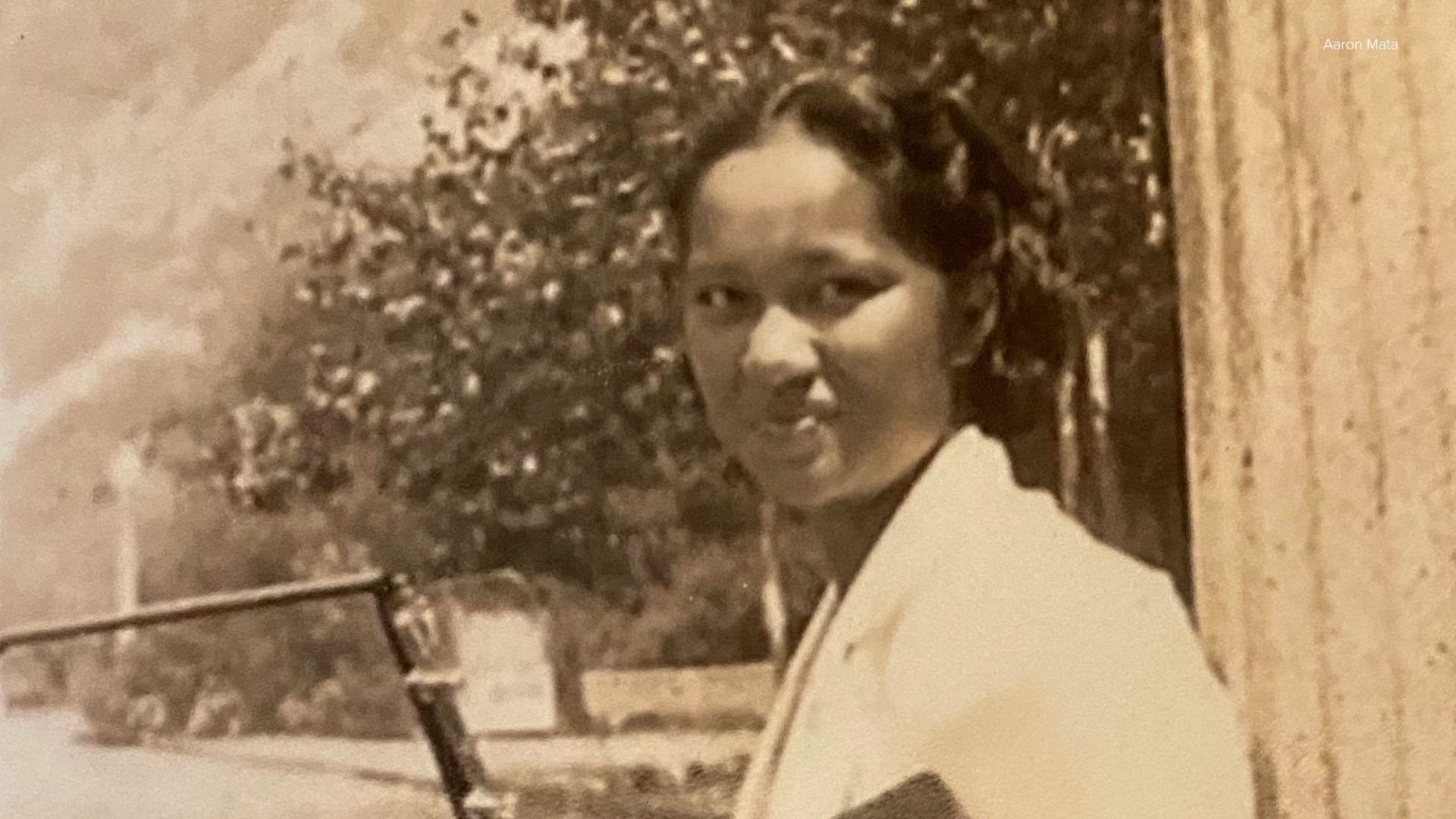STOCKTON, Calif. — The Stockton Unified School District considers Flora Arca Mata one of California’s first Filipino-American teachers and someone who helped pave the way for other Filipino-American teachers.
“She really helped a lot of the administrators that went on to become principals and administrators for Stockton Unified and even out in Sacramento,” says Eddie Mata, Flora Arca Mata’s son.
Eddie said he didn’t realize the impact she had until he got older.
“Her first class are in their 80s right now, and there's a lot of those became professionals, teachers, doctors, lawyers,” Eddie said.
He said his mom gave kids hope for their future.
“I grew up in South Stockton. We lived there, and it was a tough neighborhood and she would always say, 'oh, you're going to become a principal, you're going to become a superintendent' and the funny thing is, a lot of them did,” Eddie said.
Flora was born in 1917. She was originally from Hawaii and moved to Stockton as a child and lived in Stockton’s Little Manila. Historians consider Stockton as having one of the largest populations of Filipinos in the U.S. in the early to mid-1900’s. After the U.S. took the Philippines as a colony, many came here searching for an opportunity such as a job or a college education.
Flora attended local schools and went to UCLA for college. At the time, her family says it was difficult to go to college because of the cost. Flora’s sister received a full ride scholarship to Stanford but instead worked in the fields to put her younger siblings through college like Flora.
At UCLA, Flora was one of the few women in her class. It’s where she met her husband Vidal Mata. She was the first Filipino-American woman to graduate from UCLA.
After graduating, they worked for prominent families as tutors and housekeepers in the Los Angeles area.
The Filipino-American National Historical Museum in Stockton said it was difficult for some Filipino-Americans to be considered for professional jobs and many ended up working in agriculture and service line work.
Flora and her husband decided to move to the Philippines in the late 1930’s to get a teaching job and stayed there until the end of World War II. They moved back to Stockton in 1947 but getting a teaching job was not easy.
Eddie explained the interview process.
“When she got there, they said, 'oh, you're Asian Pacific Islander' and then the first thing the lady said was, 'oh, you speak very good' and then she said, the lady went, 'you speak very good English,' you know,” Eddie said. “My mom... she would smile, and she would laugh about it.”
Flora became Stockton Unified School District’s first Asian American teacher in 1948, one year after Wilhelmina Henry became the school district’s first black teacher. They both became friends and were only allowed to teach in South Stockton.
Her son says she always remained positive throughout her career no matter what she faced.
Teaching was her passion and she taught until she could no longer drive at 81 years old.
In her decades of teaching, not only did she influence her community, her students, and fellow Asian Americans to become educators but also her family. Many of them are in the education field from her own kids to her great-grandchildren.
In 2019, the Stockton Unified School district announced it named a new elementary school in her honor. Wilhelmina Henry’s daughter went to the naming committee to help advocate for the naming. A group called Little Manila Rising, which are advocates for the Filipino community, held a campaign to make it happen - calling her a trailblazer breaking through many racial barriers.
“The Filipino Community really backed her up. That was really neat to see, so I was happy,” Eddie said. “She was a very, very humble person, you know. She, kind of... she'd go to assemblies and awards and things and she would just say, 'oh, that's very nice.'”
Flora never had a chance to see that school and her name on this sign.
She died at the age of 95 in 2013. Her son said she was always so modest.
He doesn’t know if she truly realized how much of a difference she made in people’s lives. Her job was more than just a job. It was a calling.
(Editor's Note: Sabrina Teresa Sanchez contributed to this research.)
► GET THE RACE AND CULTURE NEWSLETTER: Get more community stories like this in your email with the Race and Culture newsletter. Sign up at www.abc10.com/email
We want to hear from you
For National Asian American and Pacific Islander Heritage Month, what Asian-American or Pacific Islander figure — past or present — should we put a spotlight on? How have they made an impact in your life? Tell us about them.
This project is a part of our newly developed race and culture team. The mission of the Race and Culture team is to consistently serve people who have been historically overlooked or underrepresented in the media by amplifying their voices through authentic representation, community engagement and in-depth storytelling on all platforms. If you have other suggestions or members of the community you'd like us to highlight, please send an email to our race and culture team lead, Kandace Redd, at kredd@abc10.com.
We may share your response with our staff and publish a selection of stories that could include your name, age, and location. We respect your privacy. Your email address and phone number will not be published and by providing it, you agree to let us contact you regarding your response.
WATCH ALSO:

